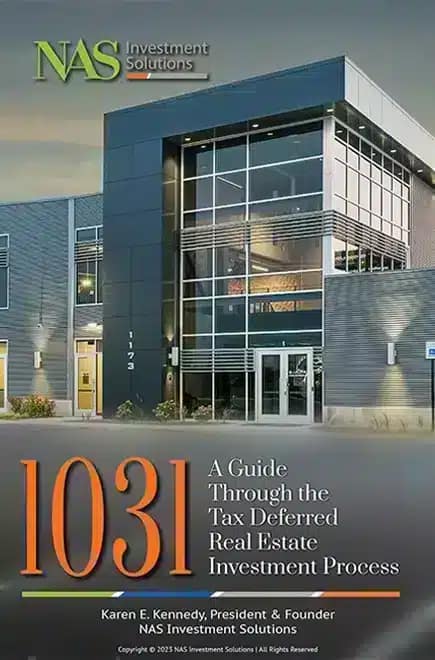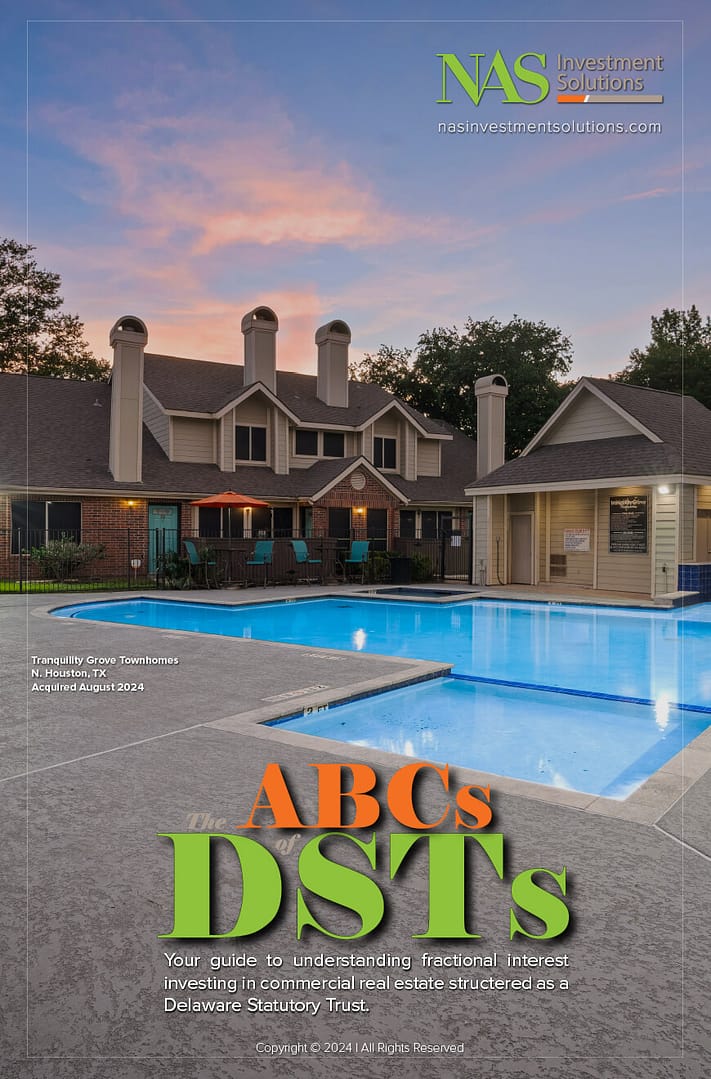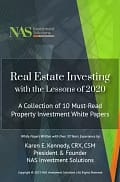If nothing else, this year has absolutely drawn a laser focus on one very important fact – we must plan for the unexpected. The extreme circumstances and resulting market volatility which has occurred since March 2020 is unlike anything our investors have experienced in their lifetimes. With uncertainty coupled with market volatility comes a lot of emotion – primarily fear. Minimizing risk and how to comfortably stay invested has been a focus across the board. So, the question becomes how does one keep their money safe and grow it at the same time?
Surely we would all agree one critical factor is to make sure you are working with experienced and reputable people. Working with a person or a team of highly experienced and seasoned professionals is the first step to leveraging the power of economies of scale. In this way you can maximize your returns with business practices previously afforded to larger investors/investment groups, and which cannot usually be matched by an individual investor. After all, you have worked hard for your money and as you move through life that money needs to go to work and deliver returns to you.
As an investor, you must stay informed and clearly define risk thresholds and your objectives and stick to your process – whatever that process may be, it must be one with which you are comfortable.
- Identify your goals on the front end
- Manage your expectations
- Avoiding large losses can outweigh the benefits of big market gains over time
- Find a process you can fall back upon when things are uncertain
- Stick to the asset solutions you are comfortable with as a methodology to minimize emotional and potential financial mistakes
Not that long ago, holding real property was limited to elite individuals and institutions — the original “landlords” — whose estates were passed down from generation to generation. The general population’s entry into this exclusive arena has allowed a broad spectrum of individuals to accumulate wealth. Ironically, many individuals have discovered that perhaps the most challenging aspect of owning real estate is, in fact, deciding when it is time to sell it.
The decision to sell is complicated further by the fact that, at the same time, another presumably knowledgeable investor who also has studied the property and market has concluded that the time is right to acquire it. Do not let your strategy and process be clouded by the seller’s decision to sell. At the same time, be a vigilant buyer with your eyes wide open, not “wide shut”. Consider the financial and the nonfinancial influences in play:
Financial Analysis
- Tax considerations
- Yield Determination: Essentially this is the amount of money that would be freed up by a sale at the current time. These are after tax dollars. Basically, 3 factors can improve the ongoing yield: increasing rental rates, decreasing capitalization rates and decreasing interest rates.
Nonfinancial influences
- Market Area
- Property goals and performance
- Alternative properties: 1031 exchange alternatives
- Changed investment goals
- Industry evolution
As it has in so many areas of the economy, the Covid-19 pandemic has heightened the complexity for commercial property owners and tenants alike. Property owners looking to protect their investments have several new factors to consider as they approach their year-end planning.
In these moments, of course everyone wants to be sympathetic. People want to be good citizens, but they also do not want to lose their investments. They worked hard for their money and want it to continue to work hard for them. It is a delicate line to walk.
Buy, Sell or Hold
Despite the economic uncertainty caused by Covid-19, industry professionals in multiple sub-markets across the country report their local real estate market has remained relatively healthy. Buoyed by low interest rates and a growing economy pre-COVID that had demand for property outpacing supply, many investors continued to eye commercial property purchases.
In part, because interest rates are so low and people have been on the sidelines, there’s money which needs to be put into executing on investment strategies. Investors cannot sit for extended periods of time without putting this money to work for them.
Real estate is usually a long-term investment, whether it is a primary residence or a rental property. The decision to sell an investment property can be much different compared to selling a home, particularly when it comes to capital gains and other financial implications. But sometimes personal decisions can influence when an investment property owner wants to sell. Here are some key reasons why owners should sell their investment property. Astute commercial property owners should be aware of a watchful eye on these signals:
- Tax code advantages: For those who want to sell, the Internal Revenue Code Section 1031 permits a tax-deferred exchange. This allows investors to sell one property and buy another, thus kicking the can down the road with respect to paying capital gains taxes on the investment property.
- Loan term may be ending: Many, if not most investors use some level of debt, and many use term loans, which will not be fully amortized [unlike residential mortgages]. Most commercial loans mature within a 5 to 10 year window, and at the end of the loan term the investor must decide whether to sell or refinance.
- Strong market conditions: When prices are high, and a specific asset type is in demand, the market condition encourage selling. To sit it out could force the investor to have to wait until the next market cycle comes around.
- Taxes and insurance costs are increasing: When taxes and insurance costs increase, and given these are not controllable expenses, the profitability of owning a property in a certain market becomes more at risk. These uncontrollable costs make it more expensive to be an owner.
- Long-term tenants leave and occupancy declines: If long term tenants leave a property [specifically retail and office assets] the value to the property is dramatically impacted.
Having calculated the relevant financial rates of return and reduced other issues down to a quantitative comparison, the investor now should be ready to make a decision. With any luck, both results will point to a clear best choice. If not, no ready rule of thumb exists to determine the winner. Just as both a buyer and a seller can be right when they evaluate the same property and come to the opposite conclusions, so the stamp of personal judgment remains the most important part of any investment decision.
Ultimately, each investor and each property is different. They key is to pinpoint your specific goals – short and long-term – and then ask yourself if selling the property would help you get closer to those objectives.










